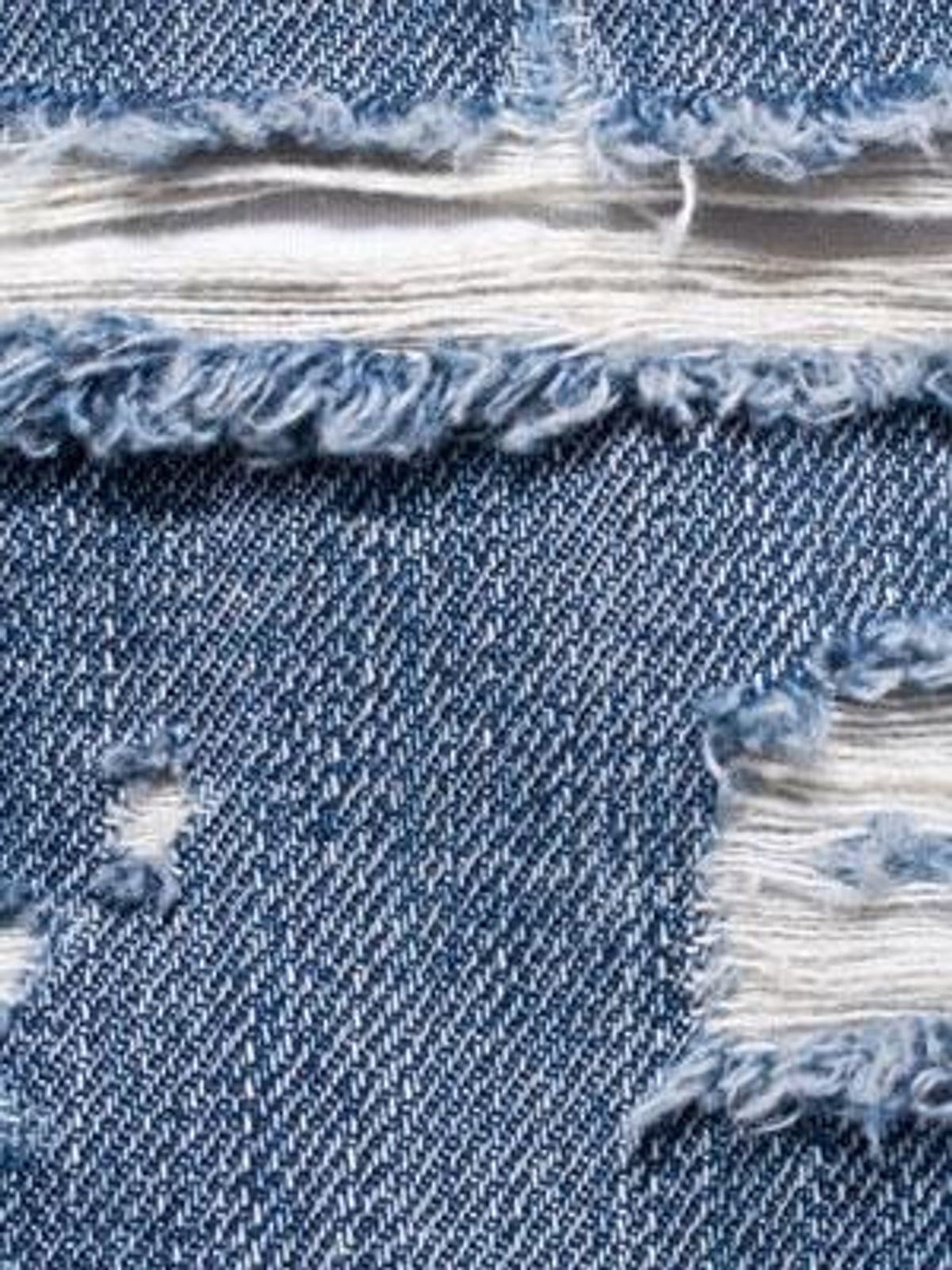Deluxe Denim
Essential Terminology

By continuing to use our site, you agree to our Private Policy and Terms of Use.

Mercerization
Mercerization is the process that puts shine and shimmer into specialized denim by concentrating dye on the surface.
Selvedge
Selvedge is, as the word suggests, the very edge of the denim fabric itself. Once called "self-edge," it was originally used to stop the fabric from unraveling and was topped off with different colors. More modern machines use fringe selvedge with no color strip, though original selvedge is as in style as ever.
Whiskering
The creasing and fading found on the crotch or back of the knees is called whiskering. It can either be produced after years of wear or by designers through a process of sand papering and appears darker on faded denim and lighter on dark denim.
Rope Dyeing
Rope dyeing is widely recognized as the most desirable way to dye yarns. In the process, cotton threads are twisted to form rope and are then briefly submerged into a pool of dye. Color richness increases with each dip!
Overdye
Overdyeing is the secret to creating a variety of uniquely tinted and shaded denim. The process allows a second coat of dye to be added in specific locations and is often used to achieve a dirty denim effect.
Garment dyed
Sometimes designers prefer to color garments directly rather than coloring the individual fibers beforehand. This method is called garment dyeing and can be more economically (and environmentally) friendly with less dye used.
Crock
Crock is no friend of white T-shirts or other light fabrics. It is a word that describes dye from a pair of jeans rubbing off onto your clothes and sometimes even your skin.
Indigo
Also called the "living color," indigo is a blue dye that never fully bonds to fibers, causing it to continually fade. It's found naturally in China and India and has been used for over 4,000 years, but has been made from mostly synthetic materials since the late 1800s.
Caste
Ever notice that your blue jeans sometimes contain hints of other colors? The caste is the effect produced by the underlying fabric in denim that can give jeans a black, brown, gray, green, yellow, or red shade.
Right Hand Twill
The right hand twill (also called the "Z" twill after the shape of the twill on the inside of the jean) is the most common weave used for denim and produces a sturdy, flat, and smooth surface.
Left Hand Twill
The left hand twill (also called the "S" twill) is a less popular alternative to RHT, woven in the opposite direction to produce a softer pre-washed fabric.
Broken Twill
Because both LHT and RHT will eventually twist with the direction of the twill, some manufacturers opt for a combination of both -- called broken twill -- which alternates left and right to avoid any future coiling of the fabric.
Sanforization
Thank sanforization for taking the guessing game out of jean shopping. Before this shrinking process (involving fabric treatments and stretching) was developed in the 1920s, denim would shrink up to 10% after the first wash and continue to diminish until the third wash.
Anti-Twist
Chubby Checker be damned. The anti-twist (also called skewing) corrects RHT and LHT denim's natural inclination to twist in the direction of the twill.
Bull Denim
Want strength? Look no further than bull denim, which is the most heavyweight of the denim weaves.
Enzyme Wash
Stonewashed jeans used to be worn down with volcanic pumice stones, but today more environmentally friendly enzyme washes that use organic proteins are the method of choice. In addition to using less labor and less non-renewable resources, it also reduces fabric-degrading wear on the denim common with pumice.
Back Cinch
That buckle you see on the back of so many jeans isn't just some arbitrary fashion statement. Once upon a time, there were no such things as belt loops on jeans - in order to tighten the waist, men had to adjust a back cinch buckle located atop the center back.
Yoke
The yoke (also called the rise) refers to the concave construction to the rear waistband on a pair of jeans and plays a big role in fit.
Chain Stitching
Almost every pair of jeans uses chain stitching -- the loop-like pattern formed with denim's iconic yellow or orange stitching thread -- which, after years of use, produces roping effects at the hem.
Contrast Stitching
Contrast stitching uses a stitch thread color that contrasts with the color of the denim.
Double Stitching
Double stitching with two parallel stitches are an important element to pocket durability and are often used to reinforce the hem.
Bar Tack
Bar tacks are the extra stitching used to reinforce edges and corners of pockets, seams, belt loops, and buttonholes. Some designers have signature bar tack patterns.
Ply
Plied denim is made from multiple yarns that have been twisted together and is necessary to increase fabric strength, especially for denims to receive heavy dyes and treatments.
Ring Spun Denim
The original and most desirable process for spinning the cotton yarn used in jeans, ring spun denim is soft, strong, and produces threads of uneven texture deviations most associated with vintage looks.
Open Spun Denim
Created in the 1970s as a cheaper alternative to ring spun, open spun denim is generally regarded as inferior, producing rougher -- even fuzzy -- jeans that aren't as durable as ring spun.
Organic Denim
Denim made from cotton grown without contaminating pesticides or fertilizers is called organic denim.
Rivets
Rivets are small metal tacks used to reinforce stress points, especially around pockets.
Raw Denim
Jeans that have not undergone any washing processes are referred to as raw denim. Usually dark indigo and stiff to the touch, they nod to the simplicity of the early days of denim.
Sandblasting
Once done completely by hand, in sandblasting, jeans are bombarded with sand to produce a faded look.